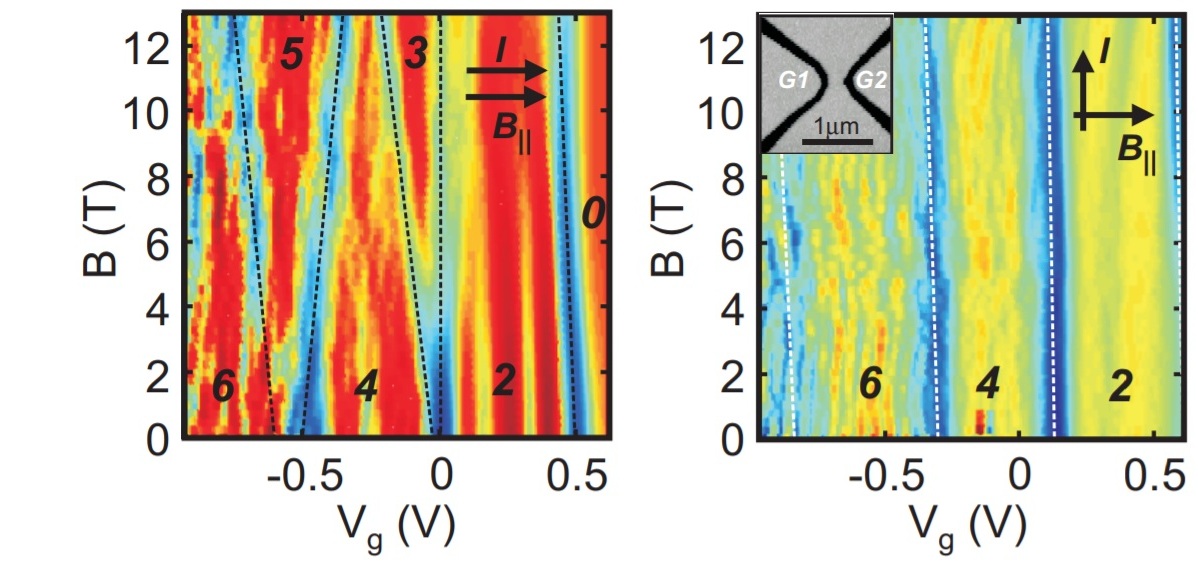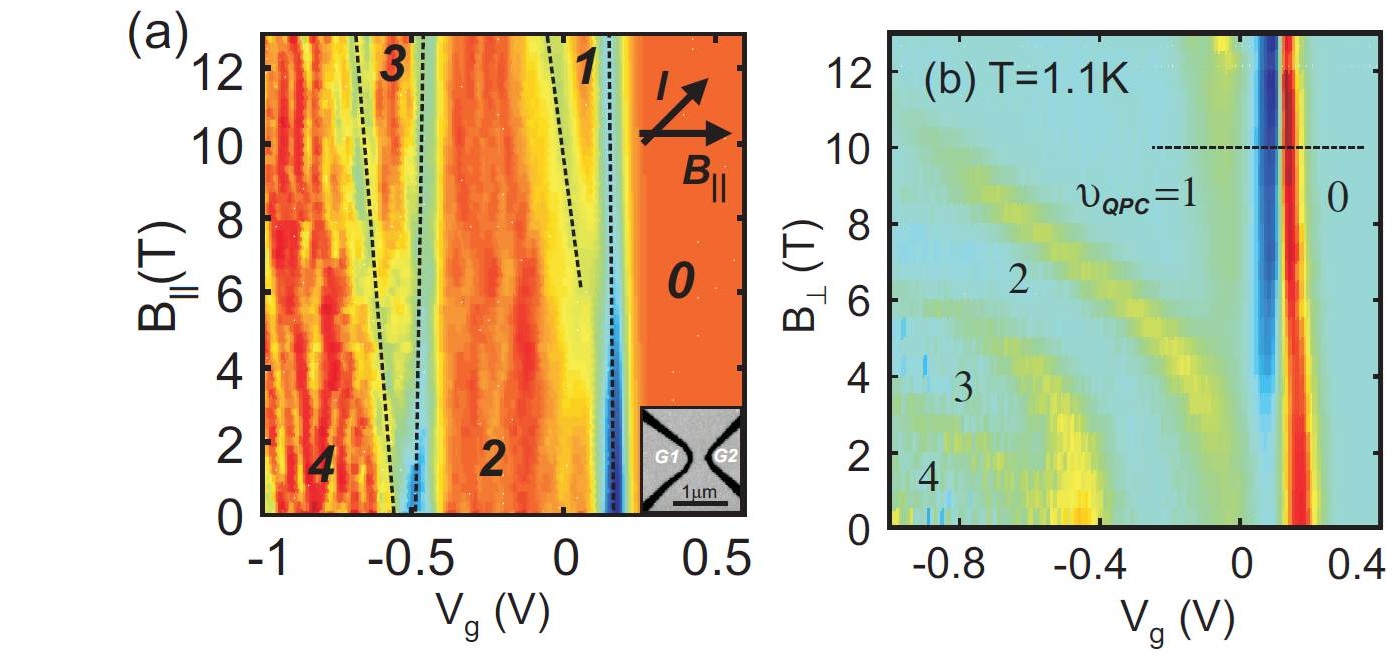Anisotropic g-factor in hole QPCs
Y. Komijani, M. Csontos, I. Shorubalko, U. Zulicke, T. Ihn, K. Ensslin, Y. Meir, D. Reuter, A. D. Wieck, Anisotropic Zeeman splitting in p-type GaAs quantum point contacts , Europhys. Lett 102, 37002 (2013).

- p-doped GaAs quantum point contacts (QPCs) and nano-wires have this peculiar property that the g-factor depends on the angle between the current and the in-plane magnetic field.
- The left figure shows a color plot of transconductance when QPC current is parallel to the in-plane B-field. The Zeeman splitting of the 1D subbands is visible.
- The right figure shows the case when the in-plane B-field is perpendicular to the QPC channel. There is no Zeeman splitting this time.
- This comes from strong spin-orbit interaction among the valence band holes. See the paper for more. We discover this in 2009, but delayed the paper to collect more data. Sadly the sample got destroyed and four years later we decided to publish what we had.

- Left, shows the transconductance when the current has an angle with in-plane magnetic field. The Zeeman splitting is less than the first figure and more than the second figure.
- Right, shows the Zeeman splitting due to a magnetic field perpendicular to the plane. The effects of Shubnikov de Haas oscillations in the contact resistance has been carefully subtracted. A diamagnetic quadratic shift is seen in addition to the Zeeman splitting.
- The fact that two Zeeman split bands do not merge for the first subband is the 0.7 anoamly. The blue shaded (negative) transconductance is due to the localization effect we had discovered in another sample, seen again here.